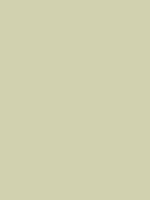#d1d1af Color Information
In a RGB color space, hex #d1d1af is composed of 82% red, 82% green and 68.6% blue. Whereas in a CMYK color space, it is composed of 0% cyan, 0% magenta, 16.3% yellow and 18% black. It has a hue angle of 60 degrees, a saturation of 27% and a lightness of 75.3%. #d1d1af color hex could be obtained by blending #ffffff with #a3a35f. Closest websafe color is: #cccc99.
-
- R 82
- G 82
- B 69
-
- C 0
- M 0
- Y 16
- K 18
● #d1d1af color description : Grayish yellow.
#d1d1af Color Conversion
The hexadecimal color #d1d1af has RGB values of R:209, G:209, B:175 and CMYK values of C:0, M:0, Y:0.16, K:0.18. Its decimal value is 13750703.
| Hex triplet | d1d1af | #d1d1af |
|---|---|---|
| RGB Decimal | 209, 209, 175 | rgb(209,209,175) |
| RGB Percent | 82, 82, 68.6 | rgb(82%,82%,68.6%) |
| CMYK | 0, 0, 16, 18 | |
| HSL | 60°, 27, 75.3 | hsl(60,27%,75.3%) |
| HSV (or HSB) | 60°, 16.3, 82 | |
| Web Safe | cccc99 | #cccc99 |
| CIE-LAB | 83.047, -5.696, 16.907 |
|---|---|
| XYZ | 56.831, 62.252, 49.577 |
| xyY | 0.337, 0.369, 62.252 |
| CIE-LCH | 83.047, 17.841, 108.619 |
| CIE-LUV | 83.047, 1.819, 25.274 |
| Hunter-Lab | 78.9, -9.501, 17.975 |
| Binary | 11010001, 11010001, 10101111 |
Color Schemes with #d1d1af
Alternatives to #d1d1af
Below, you can see some colors close to #d1d1af. Having a set of related colors can be useful if you need an inspirational alternative to your original color choice.
#d1d1af Preview
This text has a font color of #d1d1af.
<span style="color:#d1d1af;">Text here</span>This paragraph has a background color of #d1d1af.
<p style="background-color:#d1d1af;">Content here</p>This element has a border color of #d1d1af.
<div style="border:1px solid #d1d1af;">Content here</div>.text {color:#d1d1af;}.background {background-color:#d1d1af;}.border {border:1px solid #d1d1af;}Shades and Tints of #d1d1af
A shade is achieved by adding black to any pure hue, while a tint is created by mixing white to any pure color. In this example, #070704 is the darkest color, while #fcfcfa is the lightest one.
-
#070704
#070704rgb(7,7,4) -
#14140b
#14140brgb(20,20,11) -
#202012
#202012rgb(32,32,18) -
#2d2d1a
#2d2d1argb(45,45,26) -
#393921
#393921rgb(57,57,33) -
#454528
#454528rgb(69,69,40) -
#52522f
#52522frgb(82,82,47) -
#5e5e36
#5e5e36rgb(94,94,54) -
#6b6b3d
#6b6b3drgb(107,107,61) -
#777745
#777745rgb(119,119,69) -
#84844c
#84844crgb(132,132,76) -
#909053
#909053rgb(144,144,83) -
#9d9d5a
#9d9d5argb(157,157,90)
-
#a6a664
#a6a664rgb(166,166,100) -
#adad71
#adad71rgb(173,173,113) -
#b4b47d
#b4b47drgb(180,180,125) -
#bcbc8a
#bcbc8argb(188,188,138) -
#c3c396
#c3c396rgb(195,195,150) -
#cacaa3
#cacaa3rgb(202,202,163) -
#d1d1af
#d1d1afrgb(209,209,175) -
#d8d8bb
#d8d8bbrgb(216,216,187) -
#dfdfc8
#dfdfc8rgb(223,223,200) -
#e6e6d4
#e6e6d4rgb(230,230,212) -
#eeeee1
#eeeee1rgb(238,238,225) -
#f5f5ed
#f5f5edrgb(245,245,237) -
#fcfcfa
#fcfcfargb(252,252,250)
Tones of #d1d1af
A tone is produced by adding gray to any pure hue. In this case, #c2c2be is the less saturated color, while #fdfd83 is the most saturated one.
-
#c2c2be
#c2c2bergb(194,194,190) -
#c7c7b9
#c7c7b9rgb(199,199,185) -
#ccccb4
#ccccb4rgb(204,204,180) -
#d1d1af
#d1d1afrgb(209,209,175) -
#d6d6aa
#d6d6aargb(214,214,170) -
#dbdba5
#dbdba5rgb(219,219,165) -
#e0e0a0
#e0e0a0rgb(224,224,160) -
#e4e49c
#e4e49crgb(228,228,156) -
#e9e997
#e9e997rgb(233,233,151) -
#eeee92
#eeee92rgb(238,238,146) -
#f3f38d
#f3f38drgb(243,243,141) -
#f8f888
#f8f888rgb(248,248,136) -
#fdfd83
#fdfd83rgb(253,253,131)
Color Blindness Simulator
Below, you can see how #d1d1af is perceived by people affected by a color vision deficiency. This can be useful if you need to ensure your color combinations are accessible to color-blind users.
